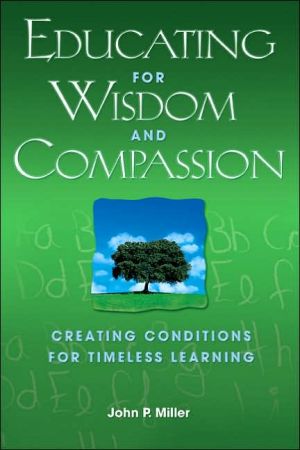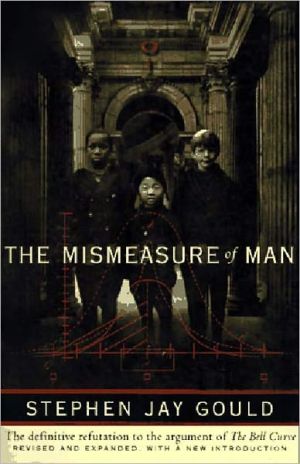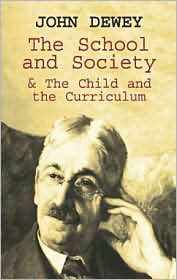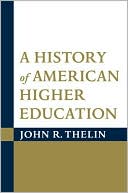Educating for Wisdom and Compassion: Creating Conditions for Timeless Learning
Essential principles of timeless learning include attention, contemplation, connection, participation, and responsibility; helping students achieve a sense of purpose; and improving alertness and mental health.
Search in google:
Essential principles of timeless learning include attention, contemplation, connection, participation, and responsibility; helping students achieve a sense of purpose; and improving alertness and mental health.
Part I Timeless Learning: Definitions and Fundamentals1. Timeless Learning What Is Timeless Learning? What Are the Characteristics of Timeless Learning? Holistic/Integrative Embodied Connected Soulful Transformative Flow Participatory Non-dualistic Mysterious and unexplainable Immeasurable What Does Timeless Learning Bring to Today's Classrooms? Conclusion References2. The Perennial Philosophy: A Relaxed Universalism Foundations of the Perennial Philosophy The interconnected nature of reality and the mysterious unity of the universe The intimate connection between the individual's inner self, or soul, and the mysterious unity Wisdom or knowledge of the mysterious unity can be developed through various contemplative practices Values are derived from seeing and realizing the interconnectedness of reality Awareness of the mysterious unity of existence leads to social action to counter injustice and human suffering ReferencesPart II Timeless Learning: Processes and Practices3. Letting Go and Becoming Empty Psychosynthesis and Dis-identification David Hunt Krishnamurti The Bhagavad Gita and Non-Attachment Spiritual Knowing Just Let Go References4. Attention and Meditation Meditation Forms of Meditation Intellectual Meditation Emotional Meditation Physical Meditation Action Meditation Meditation Practices Insight Body Scan Mantra Visualization Movement meditation Getting Started Meditation With Children Just One Minute by Naomi Baer References5. Compassion, Caring,and Lovingkindness Kindness, Empathy, Compassion, and Love Lovingkindness Practice Caring in Schools School with Forest and Meadow (Ojiya School) Service Learning Engaged Service Community-Based Work To Be and to Have References6. Contemplation, Mindfulness, and Presence Mindfulness Presence Contemplation and Mindfulness in Classrooms Contemplation and Action ReferencesPart III Timeless Learning: Perspectives, Examples, and Outcomes7. Educational Perspectives on Timeless Learning Transcendental Education Emerson Thoreau Bronson Alcott Holistic Education Linear Thinking and Intuition Relationship Between Mind and Body Subject Connections Community Connections Earth Connections Self Connections Slow Education Conclusion References8. Examples of Timeless Learning Krishnamurti Schools Principles of Learning The School The Teacher Waldorf Education Steiner's View of Development Rhythm Montessori Education Conclusion References9. Creating Conditions for Timeless Learning in Public Schools Work on Yourself Be Fully Present Recognize the Importance of the Nonverbal Honor Silence Develop a Rhythm Integrate Timeless Learning with other Forms of Learning Balancing Spontenaity and Planning Don't Forget the Body Live Your Own Truth Acknowledge the Mystery Let Your Humanity Come Through References10. The Fruits of Timeless Learning The Present Educational Context The Results of Timeless Learning Research on Contemplative Practices My Own Research Nature of Mediation Practice Personal Effects of Meditation Practice Professional Effects of Meditation Practice Profiles Ultimate Outcomes of Timeless Learning Wisdom and Compassion Joy: The Singing Soul Awe and Wonder Wholeness Sense of Purpose ReferencesBibliographyIndex
\ David Marshak"In Educating for Wisdom and Compassion: Creating Conditions for Timeless Learning, John Miller creates the category of timeless learning and describes its qualities and aspects. For someone new to this perspective, the book provides an enormously rich introduction to these insights and offers ready access to a set of detailed and wide ranging resources, including many activities the reader can experience at once. For those who are more knowledgeable, the book offers an opportunity for significant deepening of their understanding about the value and enactment of timeless learning. Educating for Wisdom and Compassion: Creating Conditions for Timeless Learning is clear and direct. It’s a book that provokes reflection, engagement, and a deeper vision."\ \ \ \ \ Lourdes Arguelles"Fills a vacuum in the education literature, a vacuum for an approach to teaching and learning anchored in the insights of various wisdom traditions and spiritually-oriented educational innovators. . . .It is a clearly written, concise, and inspired book which will be of great value to many of us in the education field."\ \ \ Geoffrey Caine"...the vignettes and stories, the suggested practices, the invocation of a fundamentally better way of being and of being in school, the focus on wisdom and compassion as outcomes of education. Much of the material is wonderful, as is the message."\ \ \ \ \ Tobin Hart"This is a timely, thoughtful, and very important book. In emphasizing the contemplative mind, it elaborates a key dimension of a new vision of education that is grounded in the wisdom traditions and essential in today’s classrooms. In a sensible, mature, and down-to-earth fashion, this work offers a philosophical context, an intimate understanding of the processes of consciousness, and a wide range of tested practical means to integrate the contemplative mind in the classroom."\ \ \ \ \ Robert London"This is a timely and valuable resource for educators concerned with integrating a spiritual perspective in their work...The book is written in a very reader friendly manner, using no or very little terminology unfamiliar to most readers."\ \ \ \ \ Pearl Solomon"What this book offers that this country and others could benefit from is a different version of what our children need...The book’s major strength is the stimulation of a different point of view in a climate that may need some remediation. The quotes and anecdotes are very good."\ \ \ \ \ Ron Miller"In this engaging book, John Miller has effectively distilled the essence of holistic education, providing parents, teachers and researchers with a solid foundation for understanding its key ideals and characteristic practices. Miller explains how a pedagogy rooted in caring, compassion, mindfulness and meaning truly makes a difference in in our lives. I will recommend this book to my students as a core reading on holistic education."\ \ \ \ \ Ed.: The Magazine of the Harvard Graduate School of Education"At a time of high-stakes testing and increasing emphasis on standards, Education for Wisdom and Compassion presents the value of a more holistic education. Author John P. Miller argues that a holistic approach allows students to gain a greater sense of purpose; reduce stress; and improve memory, alertness, and attention. Through meditation, contemplation, and reflection, Miller shows how students can find joy in learning and develop true wisdom. "\ \ \ \ \ Psyc CRITIQUES: Contemporary Psychology"Well-conceived and brilliantly brought to life, this valuable introduction will be useful to teachers, parents, administrators, and researchers interested in holistic education for diverse students of all ages."\ \ \ \ \ Ed. - The Magazine of the Harvard Graduate School of Education"At a time of high-stakes testing and increasing emphasis on standards, Education for Wisdom and Compassion presents the value of a more holistic education. Author John P. Miller argues that a holistic approach allows students to gain a greater sense of purpose; reduce stress; and improve memory, alertness, and attention. Through meditation, contemplation, and reflection, Miller shows how students can find joy in learning and develop true wisdom."\ \ \ \ \ February 15 Psyc CRITIQUES"Well-conceived and brilliantly brought to life, this valuable introduction will be useful to teachers, parents, administrators, and researchers interested in holistic education for diverse students of all ages."\ \








